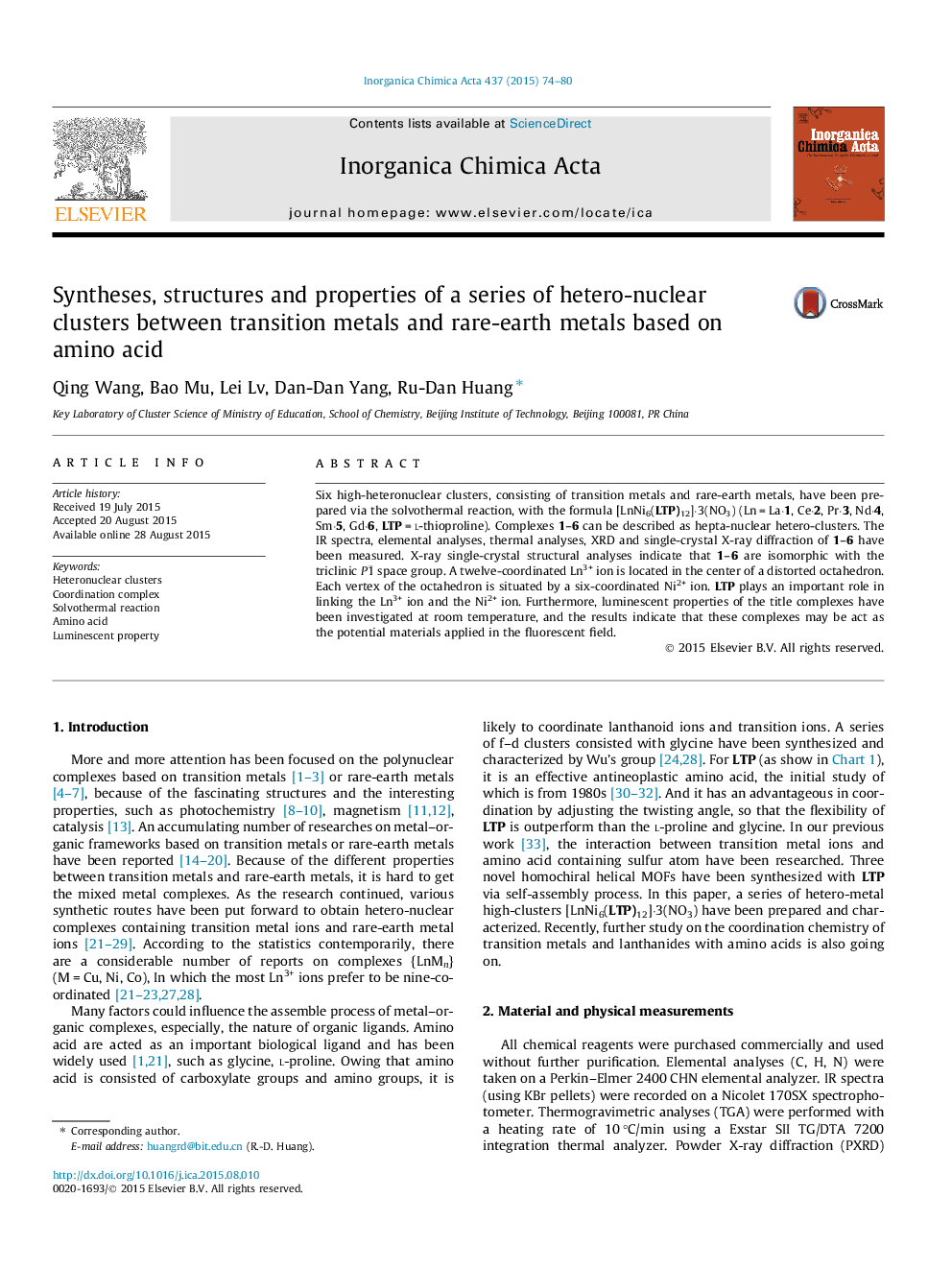| Article ID | Journal | Published Year | Pages | File Type |
|---|---|---|---|---|
| 1308793 | Inorganica Chimica Acta | 2015 | 7 Pages |
•The flexibility of LTP is better than the l-proline and glycine.•A twelve-coordinated Ln3+ ion is located in the center of a distorted octahedron formed by six-coordinated Ni2+ ions.•These complexes are with exceedingly stable thermostability.•These complexes may be act as the potential materials applied in the fluorescent field.
Six high-heteronuclear clusters, consisting of transition metals and rare-earth metals, have been prepared via the solvothermal reaction, with the formula [LnNi6(LTP)12]·3(NO3) (Ln = La·1, Ce·2, Pr·3, Nd·4, Sm·5, Gd·6, LTP = l-thioproline). Complexes 1–6 can be described as hepta-nuclear hetero-clusters. The IR spectra, elemental analyses, thermal analyses, XRD and single-crystal X-ray diffraction of 1–6 have been measured. X-ray single-crystal structural analyses indicate that 1–6 are isomorphic with the triclinic P1¯ space group. A twelve-coordinated Ln3+ ion is located in the center of a distorted octahedron. Each vertex of the octahedron is situated by a six-coordinated Ni2+ ion. LTP plays an important role in linking the Ln3+ ion and the Ni2+ ion. Furthermore, luminescent properties of the title complexes have been investigated at room temperature, and the results indicate that these complexes may be act as the potential materials applied in the fluorescent field.
Graphical abstractComplexes 1–6 are isomorphic with the triclinic P1¯ space group. A twelve-coordinated Ln3+ ion is located in the center of a distorted octahedron. Each vertex of the octahedron is situated by a six-coordinated Ni2+ ion. LTP plays an important role in linking Ln3+ ion and Ni2+ ion.Figure optionsDownload full-size imageDownload as PowerPoint slide
